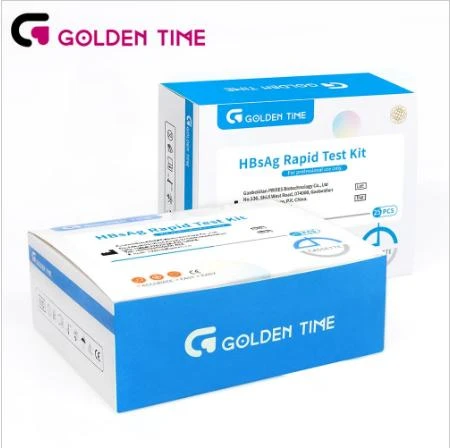Dec . 24, 2024 10:12 Back to list
Cost Analysis for Hepatitis B Testing Products from Various Manufacturers
Cost Considerations for Hepatitis B Test Manufacturers
Hepatitis B (HBV) testing is crucial in the management and control of hepatitis B virus infections, which can lead to serious liver complications, including cirrhosis and liver cancer. As the global healthcare landscape continues to evolve, understanding the costs associated with manufacturing hepatitis B tests becomes increasingly important for manufacturers, healthcare providers, and policymakers alike. This article delves into the various cost components involved in the production of hepatitis B tests, explores the pricing strategies adopted by manufacturers, and considers the implications for public health.
Understanding the Manufacturing Costs
The production of hepatitis B tests involves multiple cost drivers, including raw materials, labor, research and development (R&D), regulatory compliance, and distribution.
1. Raw Materials The quality of reagents, antigens, and antibodies used in testing significantly influences the overall production costs. Manufacturers often source these materials from specialized suppliers, and fluctuations in market prices can directly impact the cost of the final product.
2. Labor Costs Skilled labor is essential for the manufacturing process. This includes scientists who develop the tests, technicians who conduct quality control, and workers involved in production. Labor costs can vary based on the geographical location of the manufacturing facility and the level of expertise required.
3. Research and Development Continuous innovation is critical in the diagnostics field. Manufacturers invest substantially in R&D to develop more accurate, faster, and user-friendly testing solutions. This investment, while necessary, significantly contributes to the overall production cost, which must be recouped through product pricing.
4. Regulatory Compliance The healthcare industry is heavily regulated, and manufacturers must adhere to stringent guidelines set by bodies such as the U.S. Food and Drug Administration (FDA) or the European Medicines Agency (EMA). The costs associated with regulatory compliance—ranging from testing protocols to approval fees—are considerable and often result in lengthy product development timelines.
5. Distribution and Logistics Once developed, hepatitis B tests must be packaged and distributed to various healthcare providers. This involves transportation, warehousing, and sometimes, refrigeration for sensitive materials. The logistics involved in ensuring that tests reach their destinations while maintaining quality can also inflate costs.
Pricing Strategies
cost for hepatitis b test manufacturers

Manufacturers utilize different pricing strategies to remain competitive while recouping costs. The strategic setting of prices can depend on whether the manufacturer operates in a high-income market or a resource-limited setting.
1. Cost-Plus Pricing This approach involves calculating the total cost of producing the test and adding a predetermined profit margin. This method provides manufacturers with a straightforward way to ensure costs are covered.
2. Value-Based Pricing In this strategy, prices are set based on the perceived value of the test to the healthcare provider and the patient. Tests that offer faster results or higher accuracy may command higher prices.
3. Tiered Pricing This approach allows manufacturers to adjust prices based on the purchasing power of different markets. For example, tests can be sold at lower prices in developing nations to enhance accessibility while maintaining higher prices in wealthier regions.
Implications for Public Health
The cost of hepatitis B tests directly impacts accessibility and screening rates. High costs can lead to underutilization of testing, preventing individuals from knowing their HBV status and consequently missing out on timely interventions. This can exacerbate the public health burden associated with hepatitis B infections.
On the other hand, cost-effective manufacturing processes and competitive pricing strategies can promote higher test availability and usage, facilitating better public health outcomes. Efforts to encourage innovation while keeping pricing accessible are essential in combating the global hepatitis B epidemic.
Conclusion
In conclusion, the costs associated with hepatitis B test manufacturing are multifaceted, encompassing a wide range of factors that influence the final pricing of these crucial diagnostic tools. Understanding these costs is vital for manufacturers, healthcare providers, and policymakers to enhance public health outcomes through improved testing accessibility and affordability. As the global healthcare landscape continues to evolve, collaborative efforts to streamline manufacturing processes and optimize pricing strategies will be key in the fight against hepatitis B and its associated health risks.
-
Highly Accurate hCG Pregnancy Test Strips - 5 Min Results
NewsAug.02,2025
-
Premium Empty ABS Plastic Cassettes: Durable & Lightweight Storage
NewsAug.01,2025
-
Accurate Cocaine (Coc) Rapid Test Kit | Fast & Reliable Detection
NewsJul.31,2025
-
Accurate HCG Pregnancy Test Strips | Fast Home Use Kit
NewsJul.31,2025
-
Reliable Early Pregnancy Test Kit Supplier - Multi Plastic Cassette Options
NewsJul.30,2025
-
Transferrin Rapid Test Cassette – Reliable Tumor Marker Detection
NewsJul.29,2025

